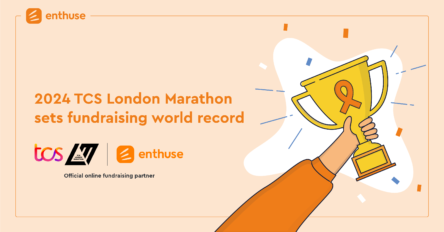
One of the biggest assets to effective online fundraising is an up-to-date website
There is no doubt that charities have limited resources, and failure to deploy them effectively will make it very difficult to raise enough funds. Websites have a pivotal role for charities and their fundraising processes, but if they are not user-friendly and interactive, you may miss out on many donations. It is a common misconception that it’s necessary to spend a lot to improve the appearance and functionality of a website but actually, you can achieve incredible results with a few simple fixes.
Visual Content
Images can powerfully convey your message in a creative way, but if the quality is poor, visitors will become frustrated and leave your website. Any photos on your website should be purposefully designed to further your objectives and mission. Use high quality images that will say what you need them to at a glance.
Simplify your Design
It’s very important to understand that people spend on average less than 59 seconds on any website, but your charity no doubt has big stories to tell. This means you have to make of this 59 second period and engage your visitors immediately. Select your highlights carefully, and make all information concise and clear, to maximise what your visitor will take in before they click away. Eliminate any surplus content.
Select fonts
Many people believe that using creative fonts on the website will appear distinctive and attract more visitors, but in actual fact unusual fonts make things difficult to read, and will therefore prove frustrating. Professionals advise using standard fonts such as Times New Roman, Times, Calibri or Arial, etc. Also, once you have selected your font, keep it consistent throughout the website. If you want to draw attention to specific content, use bold print or vary the text size. Doing things this way creates uniformity in your content and makes it easier for readers to digest.
Choose your logo carefully
A poorly designed logo won’t engage website visitors. Logo design trend change constantly, professionals will typically advise to use timeless designs with a simple appearance. Apple, McDonalds etc are good examples of this. Make sure that the colour palette of the website tones in with the logo; it doesn’t look good when the two don’t match.
Use high quality content
Content is of course fundamental to any website. It must be relevant to your area, and must all be designed to fit your organisation and attract your targeted audience – straplines, blog posts, slogans; everything. The information on the home page, bio page, and other key pages must deliver the key facts and insights into your organisation and what you’re trying to achieve. Also, your content must be well organised on different pages, and the site should not be too large. Try to eliminate ‘filler’ content – make everything concise, interesting and easy to digest.
Check website speed
Website speed is hugely important because Google penalises slow websites. It is important to test the loading speed of your website – online tools for this are available, such as Google PageSpeed Insights. Sometimes, the website speed also decays due to a poor hosting service provider; if you have this problem then it’s probably a good idea to look into changing your hosting arrangments.
Website design is a complicated task for beginners; it demands a lot of skill to achieve the highest quality result. It’s a good idea to get help with your design from experienced professionals, and you can visit www.enthuse.com to get essential tips on your charity’s website. They can help you with online fundraising, professional websites and online advertising grants.









